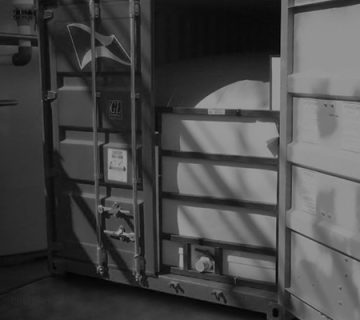RAPID CURING (RC) CUTBACK Bitumen
Asphalt cutback uses a petroleum-based solvent to dissolve the asphalt cement. Solvents are variously called distillates, diluents or cleaving agents. If the solvent used to manufacture cutback asphalt is highly volatile, it will quickly escape through evaporation. Less volatile solvents evaporate more slowly. Based on relative evaporation rate, cutback asphalt is divided into three types.
Available in fast cure (RC), medium cure (MC) and slow cure (SC). Rapid-hardening (RC) asphalt cements are combinations of asphalt cements with lightweight, highly volatile diluents, typically in the gasoline or naphtha boiling range (RC-70, 250, 800, 3000).
The degree of fluidity that occurs in each case mainly depends on the ratio of solvent to asphalt cement. Cutback fluidity can be slightly affected by the hardness of the asphalt on which the cutback is based. Several grades of cutback asphalt are produced, depending on the degree of fluidity. Some are very fluid at room temperature, others are a little more viscous. Viscous grades may need to be heated slightly to make them sufficiently fluid for construction services. Fast cure grades are designed primarily for use in spray applications such as: B. Adhesive/adhesive coatings, grit seals, sand seals, and similar surface treatments react quickly.
Rapid Curring RC-30
General Information about Rapid Curring RC-30
In order to make cutback bitumen RC-30 a liquid at room temperature and enhance its capacity to coat aggregates, some sort of solvent or condensate is added to the asphalt cement. It can be employed in energy consumption and for environmental requirements and can have a distillate content of between 12 and 40%. According to ASTM D2028-97, which was updated in 2004, it corresponds with cutback petroleum asphalts of the rapid-curing type for use in the creation and maintenance of pavements. Cutback Bitumen is penetration-grade bitumen that has had the curing period sped up by blending it with a solvent like kerosene, white spirit, petrol or naphtha. Cutback petroleum asphalts of the rapid curing variety are made from petroleum-grade bitumen produced through fractional/vacuum distillation of crude oil combined with a solvent and supplied by Petro Bitumen Company. The substance softens at elevated temperatures and hardens at lower temperatures because of the thermoplastic feature of penetration-grade bitumen. According to what is written here, the cutback bitumen (Asphalts) that Petro Bitumen Company provides is derived from petroleum-grade bitumen.
Uses and Packaging
To penetrate prime coats and create patching or stockpiling mixtures, cutback bitumen RC-30 is utilized. IToassist coat the aggregate surface, which contains an adhesive agent. To avoid leakage, it is loaded in drums and tankers in bulk.
Safety Measures
Cutback bitumen RC-30 safety • Before use, consult the safety data sheets.
• When applying, get rid of any potential ignition sources.
• When utilized in hot environments, always wear the proper PPE, including heat protection.
• Avoid letting products or laundry gets into sewage or stormwater systems.
RC-30 Cutback Bitumen Specifications
The Rapid Curing Cutback Grade RC-30 supplied by Petro Bitumen Company is guaranteed to be produced by ASTM D-2028-97 Rev 2004 and to meet the following specs.
| property | specification limit | Test method | |
| Min | Max | ||
| Kinematic viscosity at 60°,cST | 30 | 60 | ASTM D2170 |
| Flashpoint(tag open cup), °c | — | — | ASTM D3143 |
| Distillation test The distillate, volume per cent of total Distillate to 680°f(360°c) | |||
| to 437°f(225°c) To 500°f(260°c) to 600°f(316°c) Residue from distillation to 680°f(360°c), per cent volume by the difference | 55 | — | ASTM D402 |
| 75 | — | ||
| 90 | — | ||
| 50 | — | ||
| Test on Residue from distillation test | |||
| Penetration 77°f(25°c) 100g,5s mm | 80 | 120 | ASTM D5 |
| Ductility 77°f(25°c) 5cm/min cm | 100 | — | ASTM D113 |
| Solubility in trichloroethylene % | 99 | — | ASTM D2042 |
General Information of Rapid Curing RC-70
Cutback asphalt is an asphalt cement that contains a solvent or distillate, such as petroleum products, diesel fuel, kerosene, or naphtha. Its distillate content can range from 12 to 40%, but rules on air quality and the demand for distillates have led to a fall in utilisation. The curing period is controlled by the addition of a solvent, such as kerosene, white spirit, petrol, or naphtha, to Cutback Bitumen RC-70, a penetration-grade bitumen. It is produced via distributed and decentralized/vacuum distillation of crude oil combined with a solvent and is utilized in sprinkling and combining applications. The penetration and points of softening test are used to define penetration grade bitumens, which have a thermoplastic property that causes them to attenuate at excessive temperatures and solidify at lower ones.
Uses of Rapid Curing RC 70
•Prime coat penetration and the creation of patching or stockpiling mixtures are now popular uses.
•An adhesion agent is typically present in cutback asphalt when it is mixed with aggregate to help coat the aggregate surface.
•As specified in ASTM D2399, Petro Bitumen RC-70 is suited for use in the building and maintenance of pavement and is excellent for tack coatings.
•Using truck-mounted spray equipment, Petro Bitumen – 70 is applied to asphalt or fragmented surfaces.
Packing and Safety
To avoid leaks, cutback bitumen RC-70 is put in a tanker and a drum on a pallet in bulk. It is necessary to read the safety data sheets before using and transporting them. Use and store the product at the lowest possible temperature feasible, prevent breathing vapours or coming into interactions with skin, and wear the proper PPE. Do not let products or laundry go into sewage or storm drain systems.
Specifications:
With these requirements, Petro Bitumen Company warrants that RC-70 complies with ASTM D-2028-97 Rev 2004.
| property | specification limit | Test method | |
| Min | Max | ||
| Kinematic viscosity at 60°c,cST | 70 | 140 | ASTM D2170 |
| FFlashpointtag open cup), °c | — | — | ASTM D3143 |
| Distillation test The distillate, the volume per cent of total Distillate to 680°f(360°c) | |||
| to 437°f(225°c) To 500°f(260°c) to 600°f(316°c) Residue from distillation to 680°f(360°c), per cent volume by the difference | 50 | — | ASTM D402 |
| 70 | — | ||
| 85 | — | ||
| 55 | |||
| Test on Residue from distillation test | |||
| Penetration 77°f(25°c) 100g,5s mm | 80 | 120 | ASTM D5 |
| Ductility 77°f(25°c) 5cm/min cm | 100 | — | ASTM D113 |
| Solubility in trichloroethylene % | 99 | — | ASTM D2042 |
| Water, per cent volume | — | 0.2 | ASTM D95 |
General Description Of Cutback Bitumen RC 250:Cutback asphalt is asphalt cement to which a solvent or distillate has been added to make it liquefiable at room temperature and enhance its coating capacity. It can be employed in energy applications and the atmosphere requirements and can have a distillate content of between 12 and 40%. When making RC cutback asphalt, up to 45 per cent distillate is used, and it is used in mixing and spraying operations. To limit the curing period, cutback grade bitumen is penetration grade bitumen mixed with a solvent like kerosene, white spirit, petrol or naphtha. Cutback petroleum asphalts of the rapid curing variety are made from petroleum-grade bitumen produced through fractional/vacuum distillation of crude oil combined with a solvent and supplied by Petro Bitumen Company.
As determined by a proliferation and softening point test, penetration-grade bitumens have a thermoplastic property that causes them to soften at high temperatures and harden at lower temperatures. As stated in this document, Petro Bitumen’s cutback bitumen (Asphalts) are merged from petroleum grade bitumen.
Uses for RC-250 Cutback Bitumen
•Prime coat penetration and the creation of patching or stockpiling mixtures are now popular uses.
•An adhesion agent is typically present in cutback asphalt to help coat the aggregate surface.
Packing and Safety Measures
To avoid leaks, cutback bitumen RC-250 is put in a tanker and a drum on a pallet in bulk. It is necessary to read the safety data sheets before using, transporting, using, and storing the product at the lowest possible temperature feasible, preventing breathing vapours or encountering skin, and wearing the proper PPE. Do not let products or laundry go into sewage or storm drain systems.
Specifications
The Rapid Curing Cutback Grade RC-250 supplied by Petro Bitumen Company is guaranteed to be produced by ASTM D-2028-97 Rev 2004 and to meet the following demands of specifications
| property | specification limit | Test method | |
| Min | Max | ||
| Kinematic viscosity at 60°c,cST | 250 | 500 | ASTM D2170 |
| Flashpoint(tag open cup), °c | — | 27 | ASTM D3143 |
| Distillation test The distillate, volume per cent of total Distillate to 680°f (360°c) | |||
| to 437°f(225°c) To 500°f(260°c) to 600°f(316°c) Residue from distillation to 680°f(360°c), per cent volume by the difference | 35 | — | ASTM D402 |
| 60 | — | ||
| 80 | — | ||
| 65 | — | ||
| Test on Residue from distillation test | |||
| Penetration 77°f(25°c) 100g,5s mm | 80 | 120 | ASTM D5 |
| Ductility 77°f(25°c) 5cm/min cm | 100 | — | ASTM D113 |
| Solubility in trichloroethylene % | 99 | — | ASTM D2042 |
| Water, per cent volume | — | 0.2 | ASTM D95 |
General information on Cutback Bitumen RC-800
Cutback asphalt is asphalt cement to which a solvent or distillate has been added to make it liquefiable at room temperature and enhance its coating capacity. It can be employed in energy-related uses and air quality requirements and can have a distillate content of between 12 and 40%. When making RC cutback asphalt, up to 45 per cent distillate is used, and it is used in mixing and spraying operations. To limit the curing period, cutback grade bitumen is penetration grade bitumen mixed with a solvent like kerosene, white spirit, petrol or naphtha. Cutback petroleum asphalts of the rapid curing variety are made from petroleum-grade bitumen produced through fractional/vacuum distillation of crude oil combined with a solvent and supplied by Petro Bitumen Company.
The penetration and softening point tests are used to define penetration-grade bitumens, which have a thermoplastic property that causes them to soften at high temperatures and harden at lower ones.
Uses and Applications
•Cutback asphalt used in mixing with aggregate will usually contain an adhesion agent to assist in the coating of the aggregate surface.
•Cutback agents are used to lowering the viscosity of bitumen when it is applied as a primer to the surface of a road pavement aggregate base course or substrate.
•Kerosene is used as a bitumen cutback agent at different concentrations according to local conditions and requirements.
•The cutback asphalt RC-800 applies to waterproofing surfaces, plugging capillary voids, coat and bonding loose mineral particles.
Packaging Of RC-800 Cutback Bitumen
To stop any leaks inside the container, the bitumen quantity was reduced in the container and also placed in new, thick steel drums on a pallet.
Safety of RC-800 cutback bitumen
Before using, consult the Safety Data Datasheet.
Use the absolute minimum temperature for storage, use, and transportation.
Never let products or laundry go into sewage or storm drains.
Specifications:
Petro Bitumen Company guarantees RC-800 meets ASTM D-2028-97 Rev 2004 specifications.
| property | specification limit | Test method | |
| Min | Max | ||
| Kinematic viscosity at 60°c,cST | 800 | 1600 | ASTM D2170 |
| Flashpoint(tag open cup), °c | 27 | — | ASTM D3143 |
| Distillation test The distillate, volume per cent of total Distillate to 680°f (360°c) | |||
| to 437°f(225°c) To 500°f(260°c) to 600°f(316°c) Residue from distillation to 680°f(360°c), per cent volume by the difference | 15 | — | ASTM D402 |
| 45 | — | ||
| 75 | — | ||
| 75 | — | ||
| Test on Residue from distillation test | |||
| Penetration 77°f(25°c) 100g,5s mm | 80 | 120 | ASTM D5 |
| Ductility 77°f(25°c) 5cm/min cm | 100 | ASTM D113 | |
| Solubility in trichloroethylene % | 99 | ASTM D2042 | |
| Water, per cent volume | 0.2 | ASTM D95 | |






No comment